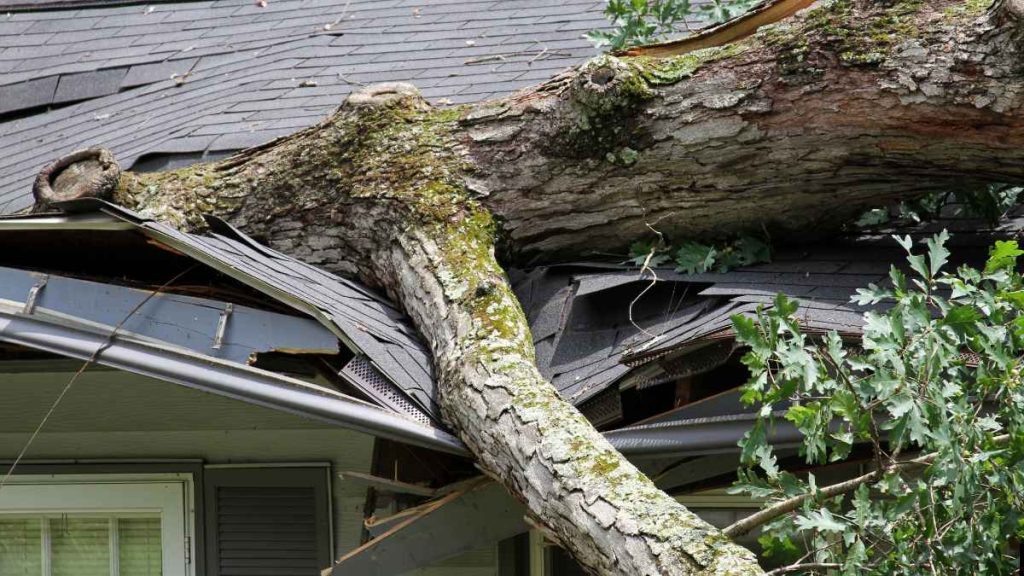The monumental task of assessing the damage caused by Storm Éowyn to Ireland’s forestry plantations is being supported by advanced technology, including satellite imagery and drones. The full extent of the destruction will take time to fully understand, but early reports suggest it has been severe.
In many areas, entire plantations were uprooted, with wind gusts reaching record-breaking speeds of up to 183 kilometres (114 miles) per hour. Along with the devastation to forests, the storm caused widespread damage across the country. Farm buildings, fences, and polytunnels were destroyed, while roads were blocked, schools closed, and roofs were torn from houses and sheds. Trees were uprooted, and large-scale power outages left 768,000 homes, farms, and businesses without electricity at the storm’s peak, particularly in rural regions. Around 200,000 homes were left without water, and thousands were also without phone services.
Described by Taoiseach Micheál Martin as “a severe, unprecedented storm, the likes of which we have not witnessed in living memory,” Storm Éowyn has earned its place in history, alongside the infamous “Night of the Big Wind” in 1839, as one of Ireland’s most destructive storms. The storm’s powerful impact will be felt for weeks, as recovery efforts begin.
In response to the devastation, Agriculture Minister Martin Heydon and Minister of State Michael Healy-Rae, who oversees forestry, have launched a Forest Windblow Taskforce. The taskforce, which mirrors the one set up following Storm Darwin in 2014, will play a crucial role in coordinating the recovery effort. Storm Darwin resulted in an estimated 7.5 million trees being blown down, and this latest storm may have caused even greater damage.
The new taskforce will bring together key stakeholders, including forest owners, forestry companies, Teagasc (the agriculture and food development authority), and Coillte, Ireland’s national forestry agency. This collaboration aims to develop a coordinated response to the storm’s aftermath, focusing on safely clearing the vast areas of forest that have been affected. Additionally, the taskforce will prioritise the issuing of felling licences for trees damaged by the storm and look into the challenges surrounding the harvesting, transport, and sawmilling of the downed trees.
The Department of Agriculture, Food, and the Marine is also addressing the needs of farmers affected by the storm. Minister Heydon confirmed that inspections will be conducted on a case-by-case basis to assess the damage to agricultural land. This will allow for targeted support to those whose farms have suffered significant loss.
Coillte, in a statement, acknowledged that the full scale of the damage to its forest estate has yet to be determined. However, early indications suggest that the storm’s impact is widespread. “Once we’ve dealt with the priority of tree clearance, our focus will turn to mapping and estimating the extent of damage across our forest estate,” Coillte said.
Technology plays a key role in speeding up the assessment and recovery process. Satellite imagery and drones will provide a detailed view of affected areas, helping forestry and agricultural experts to make informed decisions about the scale of the damage and the resources needed for recovery.
As the country begins to rebuild and recover from Storm Éowyn, the focus will be on clearing the downed trees, supporting farmers, and planning for the long-term restoration of the country’s forests. The use of technology to map and assess the damage will ensure a more efficient response, allowing Ireland to recover from this devastating storm more swiftly.



77 Comments
Boost your profits with our affiliate program—apply today! https://shorturl.fm/wwB2M
Drive sales, earn commissions—apply now! https://shorturl.fm/SkOXX
Share your link, earn rewards—sign up for our affiliate program! https://shorturl.fm/h9Hq6
Apply now and receive dedicated support for affiliates! https://shorturl.fm/MCfK5
Drive sales, earn big—enroll in our affiliate program! https://shorturl.fm/ppm6a
Sign up now and access top-converting affiliate offers! https://shorturl.fm/9j7Gh
Promote our brand and watch your income grow—join today! https://shorturl.fm/THGBn
Start sharing our link and start earning today! https://shorturl.fm/rsAaA
Join our affiliate program and start earning commissions today—sign up now! https://shorturl.fm/BitjY
Be rewarded for every click—join our affiliate program today! https://shorturl.fm/Wo2MQ
Join our affiliate community and maximize your profits! https://shorturl.fm/RUk1r
Grow your income stream—apply to our affiliate program today! https://shorturl.fm/PwKhR
https://shorturl.fm/AXVEg
https://shorturl.fm/VvToH
https://shorturl.fm/4iYvA
https://shorturl.fm/n44Iu
https://shorturl.fm/7lIFa
1s2e2a
https://shorturl.fm/AQJ6q
https://shorturl.fm/67GdW
https://shorturl.fm/SaASH
https://shorturl.fm/mkEur
https://shorturl.fm/gfW9u
https://shorturl.fm/ACjuR
https://shorturl.fm/1rWpm
https://shorturl.fm/rcnPX
https://shorturl.fm/CHkYj
https://shorturl.fm/o1sWq
https://shorturl.fm/FHUXb
https://shorturl.fm/5eNzk
https://shorturl.fm/ZLXtF
https://shorturl.fm/IOVYh
https://shorturl.fm/Yejd3
https://shorturl.fm/tw1Yz
https://shorturl.fm/rTHS1
https://shorturl.fm/ltJJS
https://shorturl.fm/Jayjo
https://shorturl.fm/T8NMh
https://shorturl.fm/ICF79
https://shorturl.fm/LRU8b
https://shorturl.fm/PFdrb
https://shorturl.fm/LaITQ
https://shorturl.fm/Fn5yn
https://shorturl.fm/1mues
https://shorturl.fm/cNWe8
https://shorturl.fm/I3mxq
https://shorturl.fm/x6GuE
https://shorturl.fm/Pzukb
https://shorturl.fm/G7wKH
https://shorturl.fm/Fv8OB
https://shorturl.fm/1xn8P
https://shorturl.fm/qVhGK
https://shorturl.fm/kyE7C
https://shorturl.fm/LUoMZ
https://shorturl.fm/UzVNs
https://shorturl.fm/JccGB
https://shorturl.fm/N9UM4
https://shorturl.fm/mggsh
https://shorturl.fm/991dL
https://shorturl.fm/QrrTj
https://shorturl.fm/xVHeN
https://shorturl.fm/MhJbf
https://shorturl.fm/47vLE
https://shorturl.fm/SRMJE
https://shorturl.fm/8fTEJ
https://shorturl.fm/dwiTx
https://shorturl.fm/bI58A
pib59o
dxaiq5
https://shorturl.fm/tdyE0
https://shorturl.fm/e4gda
https://shorturl.fm/gsQDj
https://shorturl.fm/koyVX
https://shorturl.fm/36MRR
https://shorturl.fm/9kaNL
d2mxd7
Hey, “Storm” stood out as potentially misspelled. spelldoc.com usually clarifies things quickly.
Thanks,
Logan Fuller